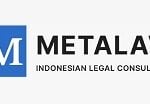-
How often is tax law amended and what is the process?
Brazilian tax legislation is characterized by its exceptional dynamism, making it one of the most frequently amended and complex systems worldwide. According to data compiled by the Instituto Brasileiro de Planejamento e Tributação (IBPT) from 1988 to 2024, the country has enacted over 7.8 million norms in total, with 517,388 specifically related to taxation; an average of about 46 new tax rules per business day.
Constitutional and Legislative Framework for Amendments
The 1988 Federal Constitution establishes a hierarchical structure for tax amendments, distributing competences among federal, state, and municipal levels. Tax matters are governed by Articles 145-162, which classify taxes and outline principles like legality, anteriority (no retroactive increases), and non-confiscation.
- Constitutional Amendments (Emendas Constitucionais – ECs): These are required for structural reforms affecting the tax system’s core, such as creating new taxes or altering revenue-sharing. The process demands approval by a 3/5 majority (308 deputies and 49 senators) in each house of the National Congress (Chamber of Deputies and Federal Senate) across two voting rounds.
- Complementary Laws (Leis Complementares – LCs): regulate fundamental aspects reserved by the Constitution, such as general tax norms, limitations on taxing power, and VAT implementation details. Approval requires an absolute majority in both congressional houses. The Constitution mandates that certain matters, like ICMS rules, be addressed via LCs to ensure uniformity.
- Ordinary Laws (Leis Ordinárias): Used for specific provisions, such as rate adjustments or incentives. These need a simple majority and presidential sanction (or congressional override of veto).
- Provisional Measures (Medidas Provisórias – MPs): Issued by the Executive for urgent matters, these have immediate effect but must be converted into law by Congress within 60 days (extendable to 120). MPs are common for tax adjustments during crises, such as MP 1,202/2023 (payroll tax exemptions). Failure to approve results in retroactive nullification, adding uncertainty.
- Regulatory Instruments:
- Normative Instructions (Instruções Normativas): Issued by tax authorities like Receita Federal to detail law application;.
- Decrees (Decretos): Executive regulations for law enforcement;
- Administrative Rulings (Soluções de Consulta): Binding interpretations for specific taxpayer queries, providing clarity but not precedential for others.
The entire process involves public hearings, committee reviews, and potential judicial review by the Supreme Federal Court (STF) for constitutionality, ensuring checks and balances.
In summary, while the high frequency of amendments enhances fiscal flexibility, it demands robust advisory support for compliance.
-
What are the principal administrative obligations of a taxpayer, i.e. regarding the filing of tax returns and the maintenance of records?
Brazil’s tax system is renowned for its complexity and high administrative burden, ranking among the most demanding globally according to various international assessments. This structure is heavily digitized, with the Public Digital Bookkeeping System (SPED) serving as the cornerstone for compliance. SPED unifies reception, validation, storage, and authentication of records and documents, replacing traditional paper-based processes and enabling enhanced government oversight. A 2024 World Bank report highlighted that Brazil’s tax code complexity score is among the highest in Latin America, with amendments contributing to an average of 2,600 hours annually for corporate tax compliance—far exceeding the global average of 234 hours.
At the federal level, administered by the Receita Federal do Brasil (RFB), core obligations include annual and periodic filings. For corporate taxpayers, the taxable period aligns with the calendar year ending December 31, irrespective of any differing corporate or accounting year-end. The primary annual filing is the Escrituração Contábil Fiscal (ECF), which consolidates monthly tax results and must be submitted electronically by the last working day of July following the tax year. Prior to the ECF, companies submit the Escrituração Contábil Digital (ECD), typically by the end of June. Monthly federal declarations include the Declaração de Débitos e Créditos Tributários Federais (DCTF) for reporting tax debts and credits, and the Escrituração Fiscal Digital (EFD) for contributions like PIS/COFINS under SPED Contribuições. Payroll and social security obligations are handled via eSocial, a SPED module that integrates labor, social security, and tax data. Additionally, the EFD-Reinf covers withholding taxes and certain contributions.
For individual taxpayers, the annual Declaração de Imposto de Renda Pessoa Física (DIRPF) is mandatory for residents earning above certain thresholds. This return, due by the last business day of May, requires detailed declarations of income, assets, liabilities, and deductions, ensuring net worth variations align with reported earnings. Individuals may also face monthly obligations, such as Carnê-Leão for certain untaxed income received abroad or from non-withholding sources due by the end of the following month.
State and municipal obligations add further layers. At the state level, Value-Added Tax (ICMS) compliance involves monthly filings like the Guia de Informação e Apuração do ICMS (GIA) and the EFD-ICMS/IPI under SPED Fiscal. Municipalities require declarations for the Imposto Sobre Serviços (ISS), often monthly or quarterly, with electronic invoicing (NFS-e) mandatory in many cities.
Regarding record maintenance, Brazilian law requires taxpayers to preserve all supporting documentation for a minimum of five years from the date the tax becomes due or the return is filed, aligning with the general statute of limitations for RFB audits. However, for certain matters like social security contributions or specific tax credits, the period extends to 10 years or more.
-
Who are the key tax authorities? How do they engage with taxpayers and how are tax issues resolved?
Brazil operates a sophisticated, multi-tiered tax administration system that mirrors its federal constitutional structure, distributing tax competencies across federal, state, and municipal levels.
At the federal level, the Receita Federal do Brasil (RFB), under the Ministry of Economy, oversees major taxes like individual and corporate income taxes (IRPF and IRPJ), social contribution on net profit (CSLL), industrialized products tax (IPI), financial operations tax (IOF), import/export duties, rural property tax (ITR), and social contributions like PIS, COFINS, and INSS employer contributions. RFB handles tax collection and administration for assessment and enforcement; international tax relations for treaty negotiations and information exchange; customs administration for border controls; tax investigation for coordinating criminal probes; and a legal department for managing administrative litigation. Complementary bodies bolster this: the Administrative Council of Tax Appeals (CARF), a quasi-judicial tribunal with balanced representation from taxpayers and government, handles appeals; the Procuradoria-Geral da Fazenda Nacional (PGFN) represents the federal government in tax litigation; and the Conselho de Controle de Atividades Financeiras (COAF) acts as a financial intelligence unit, monitoring tax-related money laundering and evasion.
State-level administrations, one per each of Brazil’s 26 states and the Federal District, independently manage taxes like the Imposto sobre Circulação de Mercadorias e Serviços (ICMS) on goods and services, vehicle property tax (IPVA), and inheritance tax (ITCMD). These entities, often called Secretarias de Fazenda or similar, share responsibilities for collection, audits, and local enforcement.
Municipalities, numbering over 5,000, oversee the Imposto Sobre Serviços (ISS), urban property tax (IPTU), and real estate transfer tax (ITBI).
Engagement with taxpayers occurs through a blend of mandatory compliance, supportive mechanisms, and evolving cooperative initiatives. Core interactions revolve around filings: all entities file annual income tax returns—individuals via DIRPF by May’s end, corporates via ECF by July’s end—consolidating monthly results, with no extensions. Monthly obligations include federal declarations like DCTF for debts/credits, SPED Fiscal for tax books, and eSocial for payroll/social security. State and municipal filings, such as GIA for ICMS or NFS-e for ISS, add layers, all unified under the SPED ecosystem.
Audits are a key engagement tool, with the RFB selecting returns based on risk criteria like income levels or business type, conducting on-site inspections with broad powers to access records. Consultations provide formal advance rulings on ambiguous matters, binding from publication and applicable broadly. To foster better relations, authorities offer settlement programs, which allow penalty/interest reductions for voluntary compliance.
Tax dispute resolution follows a structured process emphasizing administrative remedies before judicial escalation. Disputes typically initiate with an Auto de Infração (infringement notice) from audits or assessments. Taxpayers submit an administrative defense, leading to a first-instance decision. Appeals proceed to second-level reviews – federally via CARF’s ordinary/special chambers. A third level, the Superior Chamber of Tax Appeals (CSRF), addresses conflicting precedents with eight members. Debt enforceability is suspended during this phase, allowing good-standing certificates.
If unresolved administratively, taxpayers exhaust remedies before judicial review. Judicial proceedings can be proactive (lawsuits against assessments, requiring full deposits) or retroactive (opposing foreclosures with guarantees like bonds or real estate).
-
Are tax disputes heard by a court, tribunal or body independent of the tax authority? How long do such proceedings generally take?
Brazil´s tax dispute resolution system is multi-tiered, combining administrative and judicial phases for federal, state and municipal taxes.
Disputes often start from assessments or audits, with a 30-day window for initial defenses; taxpayers can skip administrative review for direct judicial action, though many opt for the administrative phase due to its relative simplicity and lack of guarantee requirements.
At the federal level, the Receita Federal do Brasil (RFB) plays a central role in audits, leveraging digital tools like the SPED system for selection and review.
In the administrative realm, bodies like the Administrative Council of Tax Appeals (CARF) at the federal level exemplify the quasi-independent nature of these tribunals. CARF consists of three sections, each with four chambers comprising eight members equally divided between tax authority representatives and those from taxpayer associations, with the chamber president—appointed by the tax authorities—holding a casting vote in ties. This mixed composition aims to balance perspectives. Similar structures exist at state and municipal levels. Administrative proceedings suspend debt enforceability and do not require court deposits, making them less burdensome initially.
Upon exhaustion of administrative remedies, or if skipped, disputes enter the fully independent judicial system. Federal taxes are handled in federal courts, while state and municipal taxes go to state courts, starting with first-instance single judges, followed by three-judge appellate panels. Further appeals can reach the Superior Court of Justice (STJ) for federal law interpretations or the Supreme Federal Court (STF) for constitutional matters, with requirements like demonstrating general repercussions for STF cases. The 2016 Civil Procedure Code (CPC) has enhanced judicial efficiency through digital filings and binding precedents, applicable to tax litigations.
Administrative resolutions generally span 2-7 years, with federal appeals subject to a 360-day deadline that is frequently exceeded without penalties. Judicial phases add 3-8 years or more, with first-instance judgments taking 2-4 years, appellate decisions 2-3 years, and superior court reviews 1-3 years, potentially totaling 8-15 years or over 20 in exceptional cases. Factors like case complexity, evidence requirements (e.g., documentary and expert proofs), and interlocutory appeals extend durations.
Settlement programs allow taxpayers to negotiate reductions in penalties and interest.
-
What are the typical deadlines for the payment of taxes? Do special rules apply to disputed amounts of tax?
Brazil’s tax payment framework is characterized by its intricate scheduling, designed to optimize government cash flows while accommodating diverse taxpayer profiles across federal, state, and municipal levels.
Federal income taxes for corporations (IRPJ) require monthly calculations and payments by the last working day of the subsequent month, based on actual or estimated revenues. Any year-end balance is due by March’s last working day, with quarterly alternatives allowing three installments from the following month. Social contributions like PIS/COFINS and employer INSS align with monthly payroll or revenue cycles. For individuals, the annual DIRPF covers taxable income above thresholds, due by May’s end.
State-level taxes, primarily ICMS (tax on goods/services), mandate monthly payments by dates tied to CNPJ endings (e.g., 10th-20th of next month), with variations across 27 jurisdictions. Municipal ISS (2-5%) often requires quarterly or monthly remittances, with electronic invoicing (NFS-e) facilitating real-time compliance in major cities.
Disputed amounts invoke specialized rules to safeguard rights amid Brazil’s litigious environment, where disputes often stem from audits revealing underpayments or credit denials. Administrative proceedings suspend collection automatically until final decisions, without guarantees needed. Judicial escalation requires guarantees for suspension, such as full cash deposits, bank letters, tax insurance policies, real estate pledges or fiduciary assignments of revenues/receivables. These enable certificates of tax regularity (CND), vital for public contracts, financing, or incentives. Exceptions include demonstrable nullity or clear rights, granting suspensions without collateral via provisional measures.
Settlement programs encourage voluntary resolution offering reductions on fines/interest and extended terms for instalment payments.
-
Are tax authorities subject to a duty of confidentiality in respect of taxpayer data?
Brazilian tax authorities are bound by a strict duty of confidentiality regarding taxpayer data, rooted in Article 5 of Federal Constitution, which protects privacy and personal data, and Article 198 of the National Tax Code (CTN), which prohibits the Receita Federal do Brasil (RFB) from disclosing information obtained during tax assessments, collections, or audits. Complementary Law No. 105/2001 extends this duty to financial data accessed from institutions, with violations subject to penalties. Exceptions are permitted under a “public interest” standard, such as for criminal tax investigations, judicial proceedings, or international treaty compliance (e.g., information exchange), with protocols like taxpayer notification or judicial authorization required in sensitive cases. Despite robust safeguards, challenges persist, including inconsistent enforcement and concerns over data security in digital systems like SPED, prompting calls for stronger oversight to balance privacy and transparency.
-
Is this jurisdiction a signatory (or does it propose to become a signatory) to the Common Reporting Standard? Does it maintain (or intend to maintain) a public register of beneficial ownership?
Brazil champions global tax transparency via the Common Reporting Standard (CRS) and a robust beneficial ownership registry, harmonizing international obligations with domestic safeguards.
Under CRS, overseen by Brazil’s Federal Revenue Service (RFB), financial institutions report non-resident account details—balances, income—via e-Financeira, enabling annual exchanges with over 100 jurisdictions, including the United States (US), European Union (EU) and BRICS (Brazil, Russia, India, China, South Africa) to curb evasion.
Complementarily, Brazil adheres to the Foreign Account Tax Compliance Act (FATCA—U.S. legislation requiring foreign financial institutions to report U.S. account holders to prevent offshore evasion), facilitating reciprocal reporting.
The Cadastro Nacional da Pessoa Jurídica (CNPJ), a centralized database for corporate registrations and beneficial ownership registry, administered by RFB and Departamento Nacional de Registro Empresarial e Integração (DREI) mandates disclosure of ultimate beneficial owners (UBO—the natural person who ultimately owns or controls a legal entity, typically defined by ≥25% ownership or significant influence) for all entities, including foreign trusts, upon registration and updates.
Access to UBO data remains confidential, restricted to authorized entities like tax authorities, law enforcement, Brazil’s Council for Financial Activities Control (COAF) and financial institutions for Anti-Money Laundering and Combating the Financing of Terrorism (CFT), often requiring approval and fees.
-
What are the tests for determining residence of business entities (including transparent entities)?
The Brazilian legal system does not stipulate specific criteria or tests for ascertaining the tax residence of business entities.
Brazil’s tax residency framework for business entities mainly emphasizes incorporation as the primary test, reflecting its civil law tradition and focus on formal registration.
Accordingly, for purposes of Article 14 of Law 9,249/1995, a legal entity is considered a resident for tax purposes if it has been incorporated in Brazil. The tax domicile of a Brazilian-incorporated entity is its head office, as registered with the National Registry of Legal Entities (CNPJ). This formalistic approach means that the location of the company’s management and control is not relevant for determining its tax residence.
While the incorporation test provides a straightforward rule for incorporated entities, Brazil has specific rules for transparent (or pass-through) entities, which are not taxed at the entity level. Instead, income is attributed directly to partners or investors, who are taxed accordingly. Key examples include:
- Sociedade em Conta de Participação (SCP), a silent partnership for specific ventures, is transparent: no legal personality, with income, expenses, and credits allocated to partners (ostensible manages, silent invests).
- Consortiums, where income passes to members proportionally, without entity tax;
- Investment funds (e.g., FIP private equity, FIDC receivables, real estate funds) are exempt to taxation at fund level, with pass-through to investors (i.e., 15-20% withholding on distributions, depending on the type of each specific fund).
Notwithstanding the emphasis on incorporation, unincorporated entities that operate as a business or professional unit—known as “de facto companies” (sociedades de fato)—are still considered taxpayers under Brazilian tax law. These include entities that fail to register corporate and tax documentation with relevant authorities, such as the Commercial Board of Trade.
Accordingly, despite the inherent illegality of such entities, certain judicial precedents have affirmed that those “informal” companies are nonetheless liable for Corporate Income Taxes in a manner analogous to duly registered companies.
Finally, it is worth mentioning that Brazilian representatives or commission agents may create a permanent establishment (PE) for their foreign principals if they have authority to bind the principal in local sales, services, or transactions. In such cases, the foreign principal may be taxed in Brazil on a portion of the related revenue.
-
Do tax authorities in this jurisdiction target cross border transactions within an international group? If so, how?
Yes, Brazil’s Receita Federal do Brasil (RFB) targets cross-border transactions in international groups to curb tax avoidance, base erosion, and profit shifting (BEPS). This relies on an evolved transfer pricing (TP) framework aligned with OECD standards since January 2024, per Law 14,596/2023 and Normative Instruction 2,161/2023. These introduced the arm’s length principle, scrutinizing all controlled transactions involving tangibles, intangibles, services, cost-sharing, restructurings, and financial operations. RFB balances global compliance and domestic tax base protection through audits, documentation, penalties, and dispute resolution.
The primary mechanism is the arm’s length principle, requiring intra-group prices to reflect those between unrelated parties. Related parties are broadly defined, including ownership, influence creating non-market conditions and entities in low-tax jurisdictions (tax rates below 17%) or privileged regimes. Taxpayers must select the best TP method from OECD options: Comparable Independent Price (PIC), Resale Price minus Profit (PRL), Cost Plus Profit (MCL), Transactional Net Margin (MLT), Profit Split (MDL), or others if justified.
Audits are a key targeting tool, where RFB focus on transaction delineation, comparability (functions, assets, risks, economic factors), and method application; inadequate documentation allows attribute reallocation and estimates.
Compliance mandates three-tier documentation: Master File, Local File, and Country-by-Country (CbC) reporting for all intercompany transactions.
-
Is there a controlled foreign corporation (CFC) regime or equivalent?
Yes. Brazil’s CFC regime, an anti-deferral mechanism, taxes offshore profits promptly to protect domestic revenue. The regime, rooted in MP 2,158-35/2001 and honed by Law 12,973/2014, mandates accrual-based taxation of offshore profits to Brazilian controllers, deeming them available annually on December 31 irrespective of distribution. Earnings from controlled entities (>50% voting or economic rights) or affiliates (20-50% in low-tax jurisdictions <17% effective rate or privileged regimes) integrate proportionally into the domestic tax base, subject to corporate income tax – IRPJ (15% plus 10% surcharge above BRL 240,000) and social contribution on profits – CSLL (9%, or 20% for financial institutions), yielding 34-45% effective rates. Adjustments align with Brazilian GAAP, with foreign tax credits limited to local liability and ECF reporting due July.
Law 14,754/2023 imposes transparency on foreign trusts, attributing assets and income to settlors (revocable) or beneficiaries (irrevocable), extended by COSIT Ruling 75/2025 to conditional beneficiaries amid debates on unrealized gains.
Enforcement leverages SPED, CbC reporting, and 38 DTTs under the Multilateral Convention.
Complementing this, Law 15,079/2024 integrates Pillar Two from January 1, 2025, via QDMTT on CSLL, ensuring 15% minimum for MNEs exceeding €750 million revenue, with transitional CbC safe harbors until 2027 and forthcoming rules on hybrids and low-tax entities.
-
Is there a transfer pricing regime? Is there a "thin capitalization" regime? Is there a "safe harbour" or is it possible to obtain an advance pricing agreement?
Transfer pricing (TP) Rules
Yes, there are TP rules in Brazil.
The Brazilian transfer pricing system underwent significant amendments pursuant to Law 14,596/23, which introduced new rules aligned with the arm’s length principle and international standards, as established by the OECD Guidelines. This law marked a pivotal reform, fully incorporating the OECD’s arm’s length principle. It replaced the previous rigid methods with more flexible ones, such as the Comparable Uncontrolled Price (CUP) method, Transactional Net Margin Method (TNMM), and Profit Split Method. Taxpayers now must conduct comparability analyses, using databases of independent transactions to justify pricing.
The Brazilian TP rules provide for the following safe harbor provisions:
- A 5% gross markup on costs for low value-added intercompany services (minimum for exports, maximum for imports) and
- Exemption from preparing/submitting Local and Master Files for intercompany transactions under R$15 million (≈ USD 2.73 million), though companies remain subject to rules and should maintain documentation for compliance.
Advance Pricing Agreements (APAs) have been introduced into the Brazilian TP system becoming effective from 2024. However, as of September 2025, the program is not yet fully operational, as the RFB has not published the final Normative Instruction following the public consultation, leaving key procedural details pending.
Thin Capitalization Rules
Brazil’s thin capitalization rules stipulate that interest paid or credited by a Brazilian entity to a foreign related party (not located in a tax haven or jurisdiction with a privileged tax regime) can only be deducted for corporate income tax purposes if the interest expense is deemed necessary for the Brazilian company’s activities and these 2:1 debt-to-equity ratios are met:
- Debt from a related party with equity participation must not exceed twice that participation.
- Debt from a related party without participation must not exceed twice the Brazilian entity’s net equity.
Excess debt is not deductible for Brazilian income tax purposes.
Similar provisions are also applicable to interest paid or credited by a Brazilian entity to an individual or legal entity (whether or not a related party) resident or domiciled in a tax haven or in a jurisdiction subject to a privileged tax regime. In these cases, the ratio reduces to 30% of the Brazilian entity’s net equity (0.3:1 ratio).
-
Is there a general anti-avoidance rule (GAAR) and, if so, how is it enforced by tax authorities (e.g. in negotiations, litigation)?
Supplementary Law No. 104/2001 introduced a pivotal amendment to the Brazilian National Tax Code, establishing a comprehensive “general anti-avoidance rule” (GAAR). This statute embraces a substance-over-form doctrine that, once fully implemented through regulations, will authorize the Federal Revenue Service of Brazil (RFB) to disregard or recharacterize transactions primarily designed to minimize tax liabilities. Its purpose is to reclassify or nullify arrangements that, though formally compliant, lack economic substance or serve primarily to achieve undue tax benefits, such as reductions, eliminations, or deferrals of liabilities.
Although the law has not yet been formally regulated, the RFB already applies economic-substance principles in practice. Auditors increasingly challenge structures that lack a genuine business purpose—for instance, special-purpose entities created solely to support the tax amortization of goodwill have come under intense scrutiny.
-
Is there a digital services tax? If so, is there an intention to withdraw or amend it once a multilateral solution is in place?
Unlike several other jurisdictions that have implemented digital services taxes, Brazil has not enacted such legislation as of September 2025. Currently, there is no specific Digital Services Tax implemented in Brazil so far, but there are proposals under discussion, such as the Contribuição Social Digital – CSD.
Complementary Law Project No. 157/2025, submitted to the Chamber of Deputies in July 2025, introduces a 7% Digital Social Contribution (CSD) on the gross revenues of large digital platforms from advertising and user data exploitation. Targeting global tech giants with annual revenues above BRL 500 million (approximately USD 90.9 million), the measure explicitly forbids shifting the tax burden to Brazilian consumers, aiming to protect users while asserting sovereignty over digital economies dominated by foreign entities.
-
Have any of the OECD BEPS recommendations, including the BEPS 2.0 two-pillar approach been implemented or are any planned to be implemented?
Yes, Brazil, as Inclusive Framework member since 2016, has adopted key BEPS 1.0 measures: Country-by-Country reporting (Action 13); no harmful tax regimes with ruling exchanges (Action 5); robust CFC rules with substance carve-outs; thin capitalization rules and limits; transfer pricing alignment via Law 14,596/2023 per OECD Guidelines; Exchange of Information on Request – EOIR compliance under Mutual Administrative Assistance Convention – MAAC; Automatic exchange of information – AEOI via CRS MCAA; Digital Services Contribution – CSD proposals pending Congressional approval; and treaty anti-abuse clauses in new Double Tax Treaties – DTTs.
For BEPS 2.0, Pillar Two GloBE rules are implemented via Law 15,079/2024 and RFB Normative Instruction 2,228/2024, imposing 15% Qualified Domestic Minimum Top-Up Tax – QDMTT through social contribution on net profit -CSLL surtax on multinational enterprises – MNEs exceeding €750 million revenue, effective January 2025, with transitional safe harbors.
-
How has the OECD BEPS program impacted tax policies?
The OECD’s BEPS program has had a significant impact on Brazil’s tax policies. Key influences include:
- The introduction of a global minimum tax rate of 15%, which has prompted adjustments to Brazil’s effective corporate tax rates and the adoption of mechanisms like the Income Inclusion Rule (IIR) to prevent base erosion;
- Inspiration for taxing digital services, including proposals for a Digital Services Contribution (CSD); although not fully implemented;
- Scrutiny of preferential tax regimes, such as those in the Manaus Free Trade Zone with anti-harmful practice rules;
- Amendments to Brazilian transfer pricing legislation enhancing arm´s-length comparability;
- The enactment of Country-by-Country Reporting rules, requiring multinationals to disclose global profits, taxes, and activities, thereby boosting transparency and audit capabilities for the Brazilian Federal Revenue (RFB);
- Acceleration of the unification of consumption taxes, replacing PIS/COFINS and ISS with CBS and IBS starting in 2026, for simplicity, international alignment, and attractiveness for foreign investments;
- Amplified international info exchanges, elevating revenue cooperation.
-
Does the tax system broadly follow the OECD Model i.e. does it have taxation of: a) business profits, b) employment income and pensions, c) VAT (or other indirect tax), d) savings income and royalties, e) income from land, f) capital gains, g) stamp and/or capital duties? If so, what are the current rates and how are they applied?
Brazil’s tax system aligns with the OECD Model, taxing business profits, employment income/pensions, indirect taxes (VAT-like), savings/royalties, land income, capital gains, and capital duties. Accession in 2024 accelerated alignments, including arm’s-length transfer pricing from 2024 and Pillar Two (15% minimum rate via top-up taxes) for multinationals from 2025. Double taxation treaties, OECD-based with Brazilian tweaks, cover 30+ countries, emphasizing residency and permanent establishments.
- Business Profits (a): IRPJ at 15% base on taxable income (actual/presumed), plus 10% surcharge over BRL 240,000/year (effective 25% for larger firms). CSLL adds 9% (20% financials, 15% insurance), totaling 34-45%. Worldwide for residents with credits; non-residents: 15-25% withholding on Brazilian profits.
- Employment Income and Pensions (b): Progressive PIT: 0% up to ~BRL 28,000/year (after adjustments), 7.5% on BRL 28,001-33,919, 15% on 33,920-45,012, 22.5% on 45,013-55,976, 27.5% above. Annual filing reconciles withholdings. Pensions taxable over exemptions; non-residents: 25% flat withholding.
- Indirect Taxes/VAT (c): PIS (0.65%/1.65%), COFINS (3%/7.6%), ICMS (17-20% intrastate, 4-12% interstate), ISS (2-5%), IPI (5-30%, up to 365% luxuries). Non-cumulative credits available. 2026 reform: CBS (federal, replacing PIS/COFINS/IPI) at initial 0.9%, IBS (state/municipal, replacing ICMS/ISS) at 0.1%, transitioning to ~26.5% combined by 2027, destination-based with low-income cashback.
- Savings Income and Royalties (d): Savings interest often exempt; other interest/dividends: 15-22.5% regressive (dividends untaxed at distribution, but 10-20% proposals). Royalties: up to 27.5% PIT or 34% CIT for residents; non-residents: 15% withholding (25% tax havens), treaty-reducible.
- Income from Land (e): Rentals as regular income, 20-30% expense deductions. ITR on rural land: 0.03-20% progressive by size/utilization.
- Capital Gains (f): Individuals: 15% (up to BRL 5M), 17.5% (5-10M), 20% (10-30M), 22.5% (>30M). Corporations: in 34% taxable income. Non-residents: 15-22.5% (25% tax havens). Exemptions: primary residences <BRL 440,000, small stock sales.
- Stamp and Capital Duties (g): No stamp duty.
- Capital: ITBI (2-8% municipal on realty transfers), ITCMD (4-8% state on inheritances/donations). No wealth tax.
-
Is business tax levied on, broadly, the revenue profits of a business computed in accordance with accounting principles?
Brazil taxes business profits, not revenues, with computation varying by regime under a dual-book system, where tax accounting deviates from Brazilian GAAP (aligned with IFRS) for policy adjustments, requiring detailed reconciliations and digital submissions via Public Digital Bookkeeping System (SPED). Regimes include: Lucro Real, Lucro Presumido and Simples Nacional, applying corporate income tax (IRPJ) at 15% base (plus 10% surcharge over BRL 240,000) and social contribution on net profits (CSLL) at 9% (20% for financial institutions), yielding 34-45% rates.
Only Lucro Real bases tax on adjusted accounting profits; Presumido and Simples use revenue based methods, creating complexity beyond pure profit models. Tax law heavily modifies GAAP results.
Lucro Real, required for entities with gross receipts over BRL 78 million or in sectors like finance, starts with GAAP profits, adjusting for non-deductible provisions and accelerated depreciation, suiting variable-profit firms with capped 30% loss carryforwards. Taxable profit often differs from accounting profit.
Lucro Presumido, for qualifying entities under BRL 78 million (excluding restricted sectors), presumes profits at 1.6-32% of gross revenues (e.g., 1.6% for fuel resale, 32% for services), yielding IRPJ of 1.2-4.8% and CSLL of 12-32%, simplifying bookkeeping but barring loss offsets.
Simples Nacional unifies taxes for micro/small firms up to BRL 4.8 million, covering IRPJ, CSLL, PIS/COFINS, ICMS, ISS, and INSS at progressive rates (4-33%) on revenues, easing compliance but capping growth;.
Book-tax gaps, especially in Lucro Real, demand ECF reconciliations. Temporal differences arise from accelerated tax depreciation vs. economic lives; deductible provisions for contingencies or bad debts only on realization; and deferred revenue rules for contracts, creating deferred tax under CPC 32. Permanent differences include tax-deductible interest on equity non-deductible fines, penalties, and capped expenses; and limited goodwill amortization (5-10 years with impairments). These necessitate meticulous reconciliations to withstand audits.
-
Are common business vehicles such as companies, partnerships and trusts recognised as taxable entities or are they tax transparent?
In Brazil, the tax treatment of common business vehicles varies significantly based on their legal form, organizational structure, and specific activities. Broadly, corporate entities are treated as separate taxable units (opaque), while some partnerships and special vehicles are “tax transparent” (meaning income passes directly to owners without entity-level tax). Trusts, common in places like the US or UK, aren’t formally recognized in Brazil’s civil law system (which follows European traditions), so alternative structures are used, and foreign trusts face special rules. Below is a detailed overview of the main business vehicles and their tax status:
Corporate Entities
These are treated as independent taxpayers on worldwide income (with credits for foreign taxes paid, up to limits). Examples include:
- Sociedade Anônima (S/A), similar to a public corporation with shares that can be traded.
- Sociedade Limitada (Ltda.), like a limited liability company (LLC) with private ownership.
The standard corporate tax rate comprises 15% IRPJ (plus a 10% surtax on profits exceeding BRL 240,000 annually) and 9% CSLL, resulting in an effective combined rate of up to 34%.
Partnership Structures
Partnerships are generally transparent, meaning they are not taxed at the entity level; instead, income, gains, losses, and credits flow through to the partners, who report them on their individual or corporate tax returns.
- Sociedade em Conta de Participação (SCP, silent partnership): No separate personality; fully transparent, allocations per agreement; ostensible partner manages CNPJ/filings.
- Sociedade em Nome Coletivo (general partnership): Unlimited liability; transparent pass-through, partners taxed individually (up to 27.5%) or corporately.
- Sociedade em Comandita (limited partnership): Transparent; general partners unlimited, limited capped at investment; treatment varies by role and agreement.
Consortiums (common for projects) are transparent, with results shared among members. Clear documentation avoids reclassification.
Trusts
Brazil’s legal system, based on civil law traditions from Europe, doesn’t recognize “trusts” as separate entities like in common law countries (e.g., no settlor-trustee-beneficiary setup). Instead, it uses fiduciary (trust-like) arrangements like investment funds. Foreign trusts are disregarded – assets/income attributed to Brazilian residents (settlor/beneficiary/manager) under CFC rules or on distribution, taxed up to 27.5%. Law 14.754/2023 has increased reporting requirements for offshore structures to prevent tax evasion, with penalties for failures; 2025 rulings like COSIT 75/2025 extend taxation to irrevocable and discretionary trusts, even without immediate access.
Special Vehicles
Investment funds and joint ventures are typically transparent or entity-exempt to promote growth, with taxes at investor/participant level.
- Fundo de Investimento em Participações (FIP, private equity): Transparent; gains taxed on distribution/redemption
- Fundo de Investimento em Direitos Creditórios (FIDC, receivables): Entity-exempt; investor taxation varies, with “come-cotas” semi-annual tax from 2024.
- Fundo de Investimento Imobiliário (FII, REIT): Exempt if distributing ≥95% income; investor withholding (20% non-residents; exempt for qualifying residents); unified 17.5% on financial income from 2026.
-
Is liability to business taxation based on tax residence or registration? If so, what are the tests?
In Brazil, business tax liability hinges on tax residence, not mere registration, though the latter aids compliance.
All entities operating in Brazil—resident or non-resident—must register with with the Brazilian Federal Revenue (RFB) to obtain a taxpayer identification number (CNPJ). Registration itself does not create tax liability but is mandatory for filing returns, paying taxes, and meeting reporting obligations. Failure to register can result in the business being treated as a “de facto company” (sociedade de fato), which refers to entities that operate without properly registering their corporate and tax documentation with the relevant authorities.
Per administrative and judicial precedents, such entities remain liable for corporate income taxes akin to registered ones, with penalties for unpaid periods. Jurisprudence restricts de facto status to domestic cases, excluding international scenarios.
Residence is determined by Brazilian incorporation or effective management; unregistered activities can deem an entity de facto, subjecting it to taxes and sanctions.
-
Are there any favourable taxation regimes for particular areas (e.g. enterprise zones) or sectors (e.g. financial services)?
Brazil offers a wide array of favorable tax regimes to boost economic growth, regional development, innovation, and key sectors. Incentives include reductions in corporate income tax (Imposto de Renda Pessoa Juridica – IRPJ), exemptions or reductions in social contributions (CSLL, PIS/COFINS), import duty waivers, accelerated depreciation, tax credits, and simplified regimes. Eligibility demands project approval, investments, job creation, and reporting; non-compliance risks penalties or revocation. Below is an overview by area and sector.
Regional Incentives (Enterprise Zones and Development Areas)
These target underdeveloped regions like the Amazon, Northeast, and Midwest to attract investment and reduce disparities, offering up to 75% IRPJ cuts for 10 years, accelerated depreciation, and excise exemptions.
Superintendency for the Development of the Amazon (SUDAM): Covers Legal Amazon states (e.g., Amazonas, Pará). Eligible projects in agribusiness, infrastructure, manufacturing get 75% IRPJ reduction on profits for 10 years, 30% reinvestment allowances, accelerated depreciation on capital assets.
Superintendency for the Development of the Northeast (SUDENE): Targets Northeast states (e.g., Bahia, Pernambuco). Similar to SUDAN, it provides 75% IRPJ reduction for 10 years on profits from approved projects, plus CSLL cuts in some cases, accelerated depreciation, and PIS/COFINS credits.
Free Trade Zones: The most prominent is the Zona Franca de Manaus (ZFM), a manufacturing hub in Amazonas state, established to promote industrialization. Benefits include full exemption from Import Duty (II) and Industrialized Products Tax (IPI) on inputs and finished goods sold domestically (if meeting local content rules), reduced IRPJ (up to 88% for certain projects), and PIS/COFINS exemptions on sales within the zone.
Export Processing Zones (ZPEs, e.g., in Ceará) provide customs exemptions and export streamlining.
ZFM incentives are constitutionally protected and maintained through 2073.
State-Level ICMS Incentives
States offer ICMS (state VAT) reductions or deferrals for investments in underserved areas, validated nationally to prevent “tax wars.” These persist until 2032 under the tax reform, with compensation via a federal fund.
Sector-Specific Incentives
Sectoral regimes target strategic industries to foster innovation, exports, sustainability, and infrastructure. These often provide enhanced deductions, credits, or reduced rates, with applications processed through ministries like Science, Technology, and Innovation (MCTI) or Economy.
- Research and Development (R&D) – Lei do Bem (Law 11.196/2005): for tech/innovation, offers super-deductions of 160-200% on qualifying R&D expenses (e.g., salaries, materials, third-party services), exclusion of 20-40% of such expenses from CSLL and IRPJ bases, and accelerated depreciation/amortization for R&D assets.
- Exports (REINTEGRA and Drawback): REINTEGRA gives 0.1-3% credits on export revenues (potentially rising to 5% in 2025 for sectors like steel via Bill 168/2025). Drawback suspends/refunds II, IPI, PIS/COFINS, ICMS on inputs for exports.
- Technology and Software: Software development benefits from reduced IRPJ/CSLL under the presumed profit regime and PIS/COFINS zero-rating on certain services.
- Infrastructure and Public-Private Partnerships (PPPs): Under the Program for Investment Partnerships (PPI), approved projects enjoy IRPJ exemptions during construction phases, accelerated depreciation, and PIS/COFINS suspensions.
- Oil and Gas – REPETRO-SPED: customs duty suspensions and IPI/PIS/COFINS exemptions on equipment for exploration/production.
- Agribusiness: Reduced rates on fertilizers/inputs, IRPJ incentives for rural investments, export exemptions. State ICMS deferrals common in producing regions.
- Financial Services: 2025 tax reform introduces differentiated IBS/CBS for financial operations, with input credits on non-financial costs.
-
Are there any special tax regimes for intellectual property, such as patent box?
Brazil’s approach to taxing intellectual property (IP) reflects a broader strategy to foster innovation through targeted fiscal incentives rather than adopting a dedicated “patent box” regime, which typically offers reduced tax rates on qualifying IP income as seen in countries like the United Kingdom or the Netherlands. Up until September 2025, no such European-style patent box exists in Brazil.
Instead, Brazil supports IP through R&D incentives, primarily via Lei do Bem (Law No. 11.196/2005), which provides super-deductions of 60-80% on qualifying R&D expenses for IRPJ and CSLL, potentially reducing the tax burden by 20.4-34%.
Sector-specific incentives, like the Informatics Law and the MOVER Program complement this.
-
Is fiscal consolidation permitted? Are groups of companies recognised for tax purposes and, if so, are there any jurisdictional limitations on what can constitute a tax group? Is there a group contribution system or can losses otherwise be relieved across group companies?
Brazil’s tax framework for corporate groups emphasizes individual entity taxation to prevent abuse and foster accountability. Up until September 2025, amid ongoing tax reforms, fiscal consolidation or group taxation remain unavailable for corporate income tax, mandating independent calculation, reporting, and payment by each entity. This applies to both domestic and multinational groups, irrespective of ownership, without consolidated returns.
Groups are acknowledged for targeted purposes like transfer pricing and CFC rules, but not as unified tax units. Jurisdiction hinges on residency via incorporation: Brazilian entities face worldwide taxation, foreign ones only on local-sourced income.
No standard group contribution regime exists, and losses cannot typically be shared across entities. Tax losses are entity-specific, with indefinite carryforward capped at 30% of annual taxable income (full offset allowed in agriculture). Carryback is prohibited, and losses may be forfeited upon control changes or business shifts.
Exceptions arise in select federal tax settlement programs, permitting parent company losses to offset federal debts.
In M&A, losses are restricted: spin-offs forfeit them proportionally to spun-off net worth; mergers bar absorbed entity losses from offsetting survivor profits
-
Are there any withholding taxes?
Brazil’s withholding tax regime applies to a broad spectrum of payments to ensure tax collection at source and prevent evasion, particularly in cross-border contexts. This system imposes obligations on payors to deduct and remit taxes on behalf of recipients, covering both residents and non-residents.
Dividends distributed from profits earned since 1996 are tax exempt, regardless of the recipient’s status. However, Bill No. 1,087/2025, still under legislative review as of September 2025, proposes a 10% withholding on dividends to non-residents (individuals or entities) and a progressive scale for residents exceeding certain thresholds. If enacted, this could apply from January 2026 onwards.
For cross-border payments, the standard IRRF rate is 15% on most passive income, including interest, royalties, technical assistance fees, and administrative services remitted abroad. This escalates to 25% for recipients in jurisdictions classified as tax havens (blacklisted by Normative Instruction No. 1,037/2010, updated periodically). Interest payments abroad attract 15% IRRF. Remittances for services abroad attract 15% IRRF, plus 10% CIDE where the services involve technology exploitation or transfer (e.g., technical assistance with know-how). Royalties for IP licensing are similarly taxed at 15% IRRF plus 10% CIDE, with INPI registration required for full tax deductibility and enforceability. Provisional Measure No. 1,184/2023 (effective 2024) reduced IRRF on certain travel-related remittances progressively (6% in 2023–2024, 7% in 2025, 8% in 2026, and 9% from 2027). Software commercialization payments are classified as royalties, subject to 15% IRRF. Recent changes include an increase in withholding on interest on net equity (INE) from 15% to 20% starting 2026 under Provisional Measure No. 1,303/2025, and a unified 17.5% IRRF rate for financial investments from the same year.
Brazil’s network of over 30 double taxation treaties mitigates these rates, often capping them at 10-15% for interest and royalties, with variations by partner country (e.g., 12.5% for Japan on dividends if taxed, 15% for Argentina on interest).
-
Are there any environmental taxes payable by businesses?
Brazil’s environmental fiscal framework for businesses prioritizes regulatory fees, compensatory measures, and incentives to balance economic activity with sustainability goals. Up until September 2025, Brazil has no standalone carbon tax in place. Instead, the system relies on a combination of federal and state-level charges for environmental compliance, sectoral contributions, and fees tied to licensing and resource use, such as the Federal Environmental Control and Inspection Fee (TCFA) and Minas Gerais State fee (Law No. 14.940/2003).
The recent tax reform has implemented a Selective Tax (Imposto Seletivo – IS) on goods and services detrimental to health or the environment, while providing rate reductions and incentives for low-carbon alternatives to promote sustainability.
-
Is dividend income received from resident and/or non-resident companies taxable?
Up until September 2025, dividends from resident Brazilian companies remain tax exempt for both individuals and legal entities, regardless of residency and applies even for payments to tax havens or related parties.
Dividends received from non-resident companies by Brazilian tax residents are subject to worldwide taxation. For individuals, these are included in gross income and taxed progressively up to 27.5% (IRPF). Legal entities face a combined 34% rate (15% IRPJ + 10% surtax on annual taxable income exceeding BRL 240,000 + 9% CSLL). Foreign tax credits are available unilaterally or under double taxation treaties, which typically cap source-country withholding at 10–15%. Under Brazil’s CFC rules (Law No. 12,973/2014), undistributed profits of foreign subsidiaries are taxed at the parent level, with losses from 2025 offset only against future profits of the same entity.
For cross-border payments, no withholding currently applies on outbound dividends from Brazil, but inbound dividends from abroad to residents are taxed as noted.
Bill No. 1,087/2025, currently under congressional review, proposes a significant shift by introducing a dividend tax regime. If approved, it could impose a 10% withholding tax on dividends paid to non-residents and introduce taxation for residents on distributions exceeding BRL 50,000 monthly, alongside a progressive minimum tax up to 10% for high-income individuals earning over BRL 600,000 annually. As the bill progresses through committees, amendments may alter details.
-
What are the advantages and disadvantages offered by your jurisdiction to an international group seeking to relocate activities?
Brazil appeals to multinationals with its large market, abundant resources, and incentives, particularly in renewables and tech, though offset by regulatory complexities. Ongoing reforms aim to simplify taxation, but implementation challenges remain.
Advantages:
- Market and Access: As Latin America’s largest economy, Brazil provides MERCOSUR integration for regional consumers and a recent EU trade agreement. Strong in agribusiness and a skilled workforce, it supports e-commerce and energy transitions (e.g., lithium, nickel)
- Incentives: Robust programs like Lei do Bem (enhanced R&D deductions, accelerated depreciation, WHT relief on IP); regional benefits via SUDENE/SUDAM (IRPJ/CSLL reductions in North/Northeast); sector-specific regimes for automotive, oil/gas (REPETRO), and agriculture (full loss offsets); Manaus Free Trade Zone and EPZs (exemptions from import duties, IPI, IR, ICMS, ISS); reduced VAT rates for low-carbon fuels/hydrogen. Foreign tax credits ease double taxation.
- Reforms and Entry: The 2025 tax reform merges levies into dual VAT (IBS/CBS) plus selective tax on harmful goods, phased over years to cut cascading effects. Pillar Two’s 2025 top-up ensures 15% minimum for large MNEs; OECD-aligned transfer pricing (since 2024) boosts transparency. Entry facilitated by support programs and investor visas.
Disadvantages:
- Tax Complexity (“Custo Brasil”): High corporate rate (up to 34%), multilayered taxes (federal IRPJ/CSLL, state ICMS, municipal ISS), cascading, and reform uncertainty demand major compliance overhauls. Elevated WHT for nonresidents, recent IOF hikes, and rigorous audits add burdens.
- Operational Frictions: Infrastructure gaps inflate logistics costs; bureaucracy complicates processes, with non-transparent procurement. Labor rigidity includes social security and FGTS contributions; hiring/firing is challenging.
- Broader Risks: Corruption necessitates strong controls; low English proficiency requires Portuguese focus. Economic volatility from inflation, debt, and deficits; weak IP protection and unique standards need re-certification. Cultural emphasis on relationships demands in-person engagement.
In summary, Brazil provides compelling prospects for multinational groups through strong tax incentives, a massive domestic market, and prime access to South American operations. Yet, success hinges on meticulous planning, heavy compliance investments, and a solid grasp of its intricate regulations. It best fits large-scale entities with long-term commitments, delivering market breadth and growth drivers, but demanding robust resources for compliance, local know-how, and risk handling in its complex framework.
Brazil: Tax
This country-specific Q&A provides an overview of Tax laws and regulations applicable in Brazil.
-
How often is tax law amended and what is the process?
-
What are the principal administrative obligations of a taxpayer, i.e. regarding the filing of tax returns and the maintenance of records?
-
Who are the key tax authorities? How do they engage with taxpayers and how are tax issues resolved?
-
Are tax disputes heard by a court, tribunal or body independent of the tax authority? How long do such proceedings generally take?
-
What are the typical deadlines for the payment of taxes? Do special rules apply to disputed amounts of tax?
-
Are tax authorities subject to a duty of confidentiality in respect of taxpayer data?
-
Is this jurisdiction a signatory (or does it propose to become a signatory) to the Common Reporting Standard? Does it maintain (or intend to maintain) a public register of beneficial ownership?
-
What are the tests for determining residence of business entities (including transparent entities)?
-
Do tax authorities in this jurisdiction target cross border transactions within an international group? If so, how?
-
Is there a controlled foreign corporation (CFC) regime or equivalent?
-
Is there a transfer pricing regime? Is there a "thin capitalization" regime? Is there a "safe harbour" or is it possible to obtain an advance pricing agreement?
-
Is there a general anti-avoidance rule (GAAR) and, if so, how is it enforced by tax authorities (e.g. in negotiations, litigation)?
-
Is there a digital services tax? If so, is there an intention to withdraw or amend it once a multilateral solution is in place?
-
Have any of the OECD BEPS recommendations, including the BEPS 2.0 two-pillar approach been implemented or are any planned to be implemented?
-
How has the OECD BEPS program impacted tax policies?
-
Does the tax system broadly follow the OECD Model i.e. does it have taxation of: a) business profits, b) employment income and pensions, c) VAT (or other indirect tax), d) savings income and royalties, e) income from land, f) capital gains, g) stamp and/or capital duties? If so, what are the current rates and how are they applied?
-
Is business tax levied on, broadly, the revenue profits of a business computed in accordance with accounting principles?
-
Are common business vehicles such as companies, partnerships and trusts recognised as taxable entities or are they tax transparent?
-
Is liability to business taxation based on tax residence or registration? If so, what are the tests?
-
Are there any favourable taxation regimes for particular areas (e.g. enterprise zones) or sectors (e.g. financial services)?
-
Are there any special tax regimes for intellectual property, such as patent box?
-
Is fiscal consolidation permitted? Are groups of companies recognised for tax purposes and, if so, are there any jurisdictional limitations on what can constitute a tax group? Is there a group contribution system or can losses otherwise be relieved across group companies?
-
Are there any withholding taxes?
-
Are there any environmental taxes payable by businesses?
-
Is dividend income received from resident and/or non-resident companies taxable?
-
What are the advantages and disadvantages offered by your jurisdiction to an international group seeking to relocate activities?





























